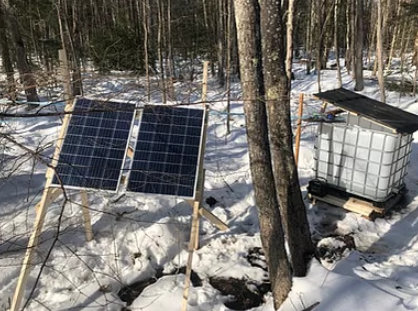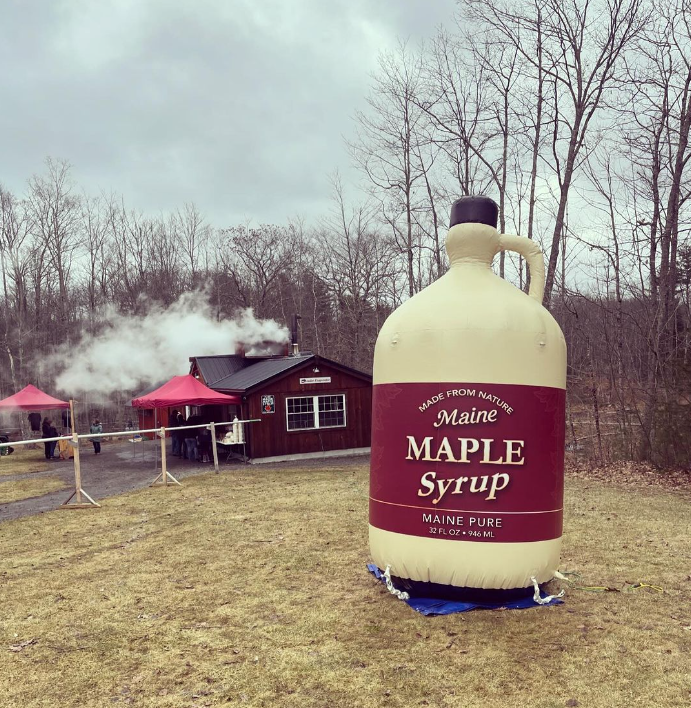
Climate and Maple Syrup's Microseasons: Scott Dunn
Many people mark Maine Maple Sunday on their calendars to focus on the sweetest product of spring, but for fifth-generation maple syrup producer Scott Dunn, the weeks leading up to the festivities are changing and challenging.
Changes to the climate are shortening the sap season, bumping up production timelines, and tightening the bottom line at his 1,600-tap family-run operation in Buxton. He describes his approach now as adapting to Maine’s volatile “microseasons.”
“The production goal is 400 gallons a year,” he said. “For us, it’s all about being ready for the early runs. The old adage was “Be ready for St. Paddy’s Day. Then it was Valentine’s Day. Now, I try to be ready by January 1. It’s a more volatile climate, so you have to try and capture the early runs.”
 If he’d waited until Valentine’s Day this year, he would’ve missed out on 22 gallons of hard-earned product, which may not sound like much, but Dunn says it adds up, especially for larger producers.
If he’d waited until Valentine’s Day this year, he would’ve missed out on 22 gallons of hard-earned product, which may not sound like much, but Dunn says it adds up, especially for larger producers.
Dunn says he puts in about 80 hours a week at the peak of production season, with some help from family members and friends who keep things running overnight. He feels confident he can maintain his property’s production size for a few years and says the syrup market has only been growing.
Even though they’re selling to essentially the same customers, Dunn says he and other syrup producers are well-connected to the latest industry trends through extension programs at a few universities and help one another out as much as possible.
Maine Won’t Wait, emphasizes the need to support Maine farms and farmers with preparing and adapting to climate effects on agriculture, such as altered growing seasons and unpredictable rainfall. Building new local markets for Maine-made foods – especially maple syrup – is also a strategy to reduce greenhouse gas emissions by reducing the need to transport food from out of state. 
"It’s hard to get sap in the early season,” he said. “It may get warm, but then it freezes solid in the tanks. It’s not easy making the early syrup, but it can make or break your season.”
Dunn says this year he and his family started boiling on February 11 this year, just a few days earlier than last year, but he’s had seasons where he started boiling as early as January.
Not only is he having to start tapping sooner in the season, but this year he’s seeing a lower sugar content in the sap— requiring more sap to create the same volume of syrup as last year.
Dunn cites increased prices of available wooded lots for sale over existing home lots, making it harder for maple syrup producers like him to expand their operations, especially in Southern Maine.
Traditional methods of producing syrup using single metal buckets or natural gravity tubing are falling out of popularity as more technology is required to make profitable amounts of syrup.
“Producers need to be able to adapt to the technology and microseasons, and need be ready earlier in the season,” he said. “The traditional production methods are going to be a lot harder.”
He also utilizes solar technology to power his vacuum tubing equipment in some of the more remote woods on his property, reducing production costs and making things easier for production wherever possible.
“We’re just another type of farmer,” he said. “The weather controls everything we do, ultimately. You’ve got to improve, adapt, and be willing to adapt to the technology and concepts out there in your favor.”